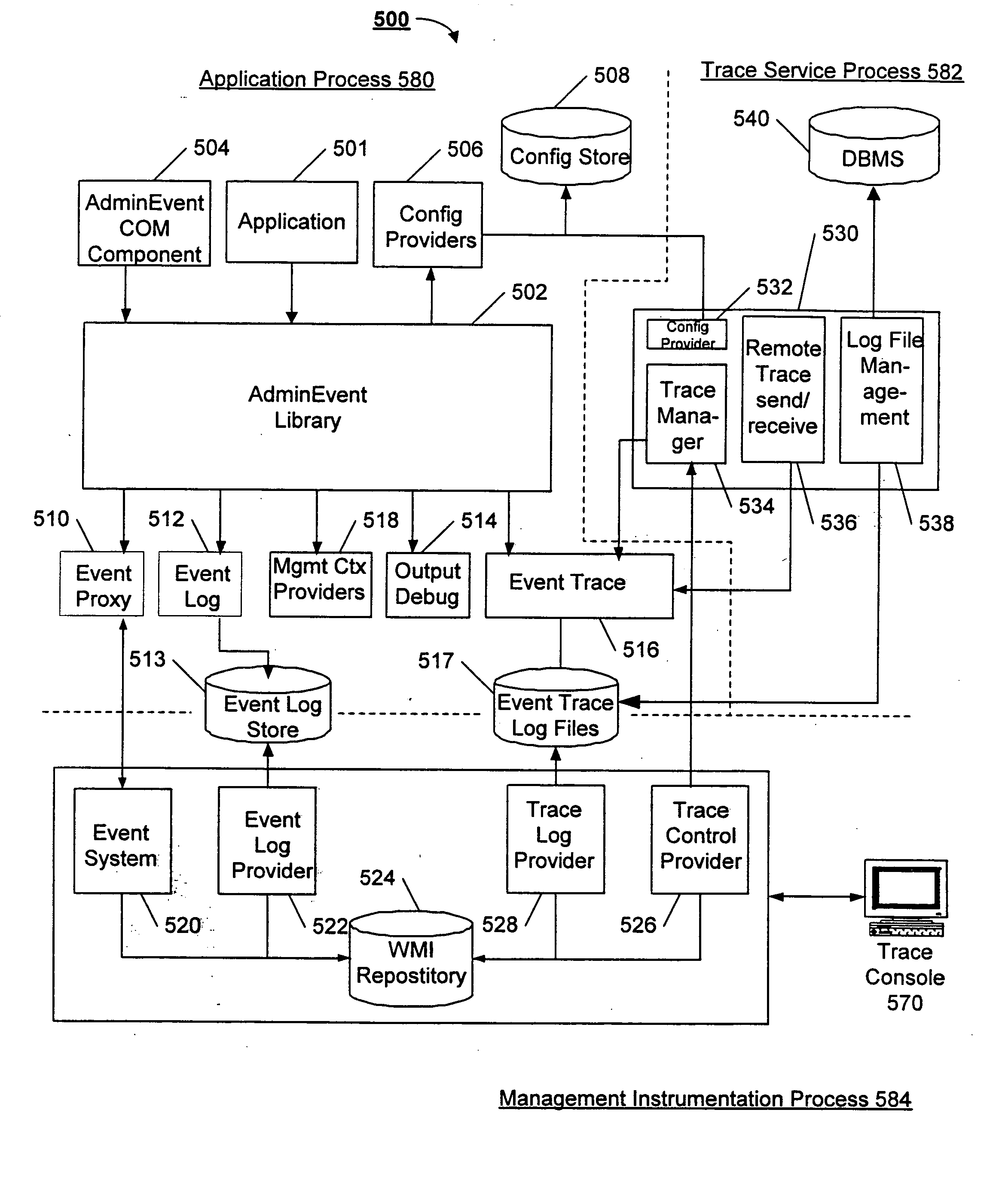Task tracing in a distributed computing environment
a distributed computing and task technology, applied in the field of distributed computing, can solve the problems of small structure in terms of the types of events, inconsistencies in the manner, and inability to completely maintain the operation, so as to reduce the chance of error on the part and reduce the risk
- Summary
- Abstract
- Description
- Claims
- Application Information
AI Technical Summary
Benefits of technology
Problems solved by technology
Method used
Image
Examples
Embodiment Construction
Overview
[0019] During the operation of large-scale software, it is often necessary to analyze the operation of the software in order to track down problems or perform other assessments. The best information to perform such an analysis comes from the software itself in the form of events that describe events that occur during the software's operation. The present invention provides an architecture whereby software may be instrumented to provide such event information in a structured way. The architecture of the present invention also facilitates the use of such events to trace a particular task performed in a distributed computing environment.
Exemplary Computing Environment
[0020]FIG. 1 illustrates an example of a suitable computing system environment 100 in which the invention may be implemented. The computing system environment 100 is only one example of a suitable computing environment and is not intended to suggest any limitation as to the scope of use or functionality of the...
PUM
 Login to View More
Login to View More Abstract
Description
Claims
Application Information
 Login to View More
Login to View More - R&D
- Intellectual Property
- Life Sciences
- Materials
- Tech Scout
- Unparalleled Data Quality
- Higher Quality Content
- 60% Fewer Hallucinations
Browse by: Latest US Patents, China's latest patents, Technical Efficacy Thesaurus, Application Domain, Technology Topic, Popular Technical Reports.
© 2025 PatSnap. All rights reserved.Legal|Privacy policy|Modern Slavery Act Transparency Statement|Sitemap|About US| Contact US: help@patsnap.com



